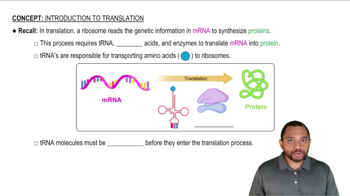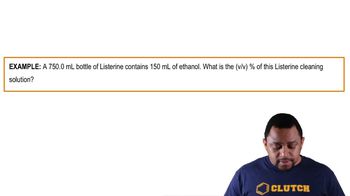Consider the following portion of mRNA produced by the normal order of DNA nucleotides:
5'ACA|UCA|CGG|GUA3'
c. Write the amino acid sequence if a mutation changes CGG to GGG. Is this likely to affect protein function?
 Verified step by step guidance
Verified step by step guidance Verified video answer for a similar problem:
Verified video answer for a similar problem:



 2:42m
2:42mMaster Translation: Protein Synthesis Concept 1 with a bite sized video explanation from Jules
Start learning